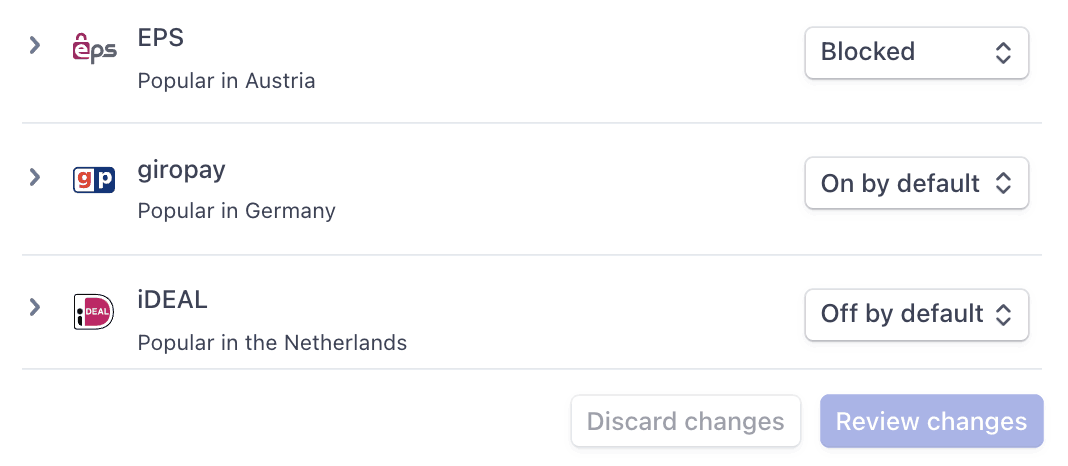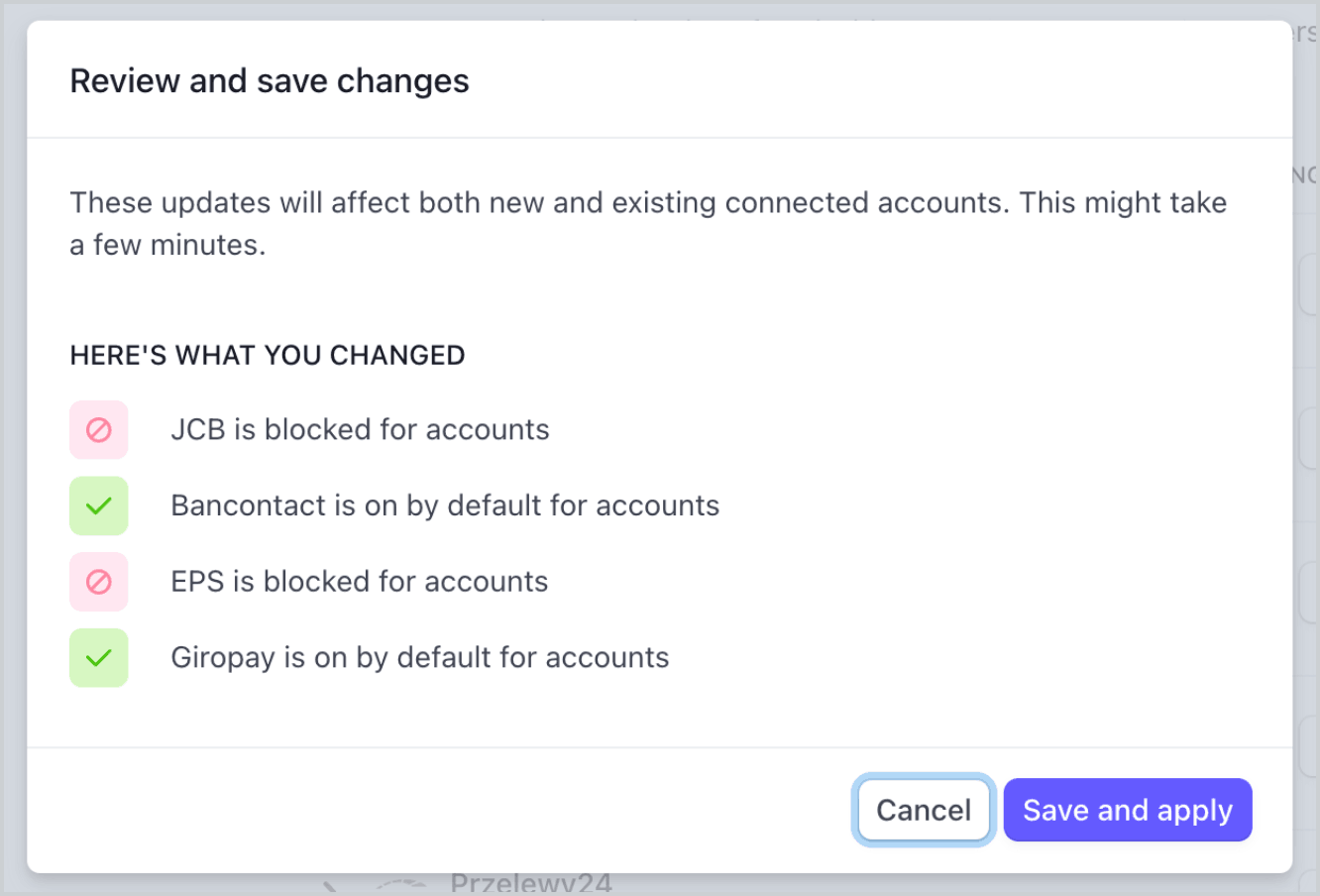Enable merchants on your platform to accept payments directlyPublic preview
Facilitate direct payments to businesses on your SaaS platform from their own customers.
Allow your merchant-configured connected account to accept direct charge payments using a Stripe-hosted Checkout page that reflects their branding.
Create a Checkout SessionClient-sideServer-side
Add a checkout button to your website that calls a server-side endpoint to create a Checkout Session.
<html> <head> <title>Checkout</title> </head> <body> <form action="/create-checkout-session" method="POST"> <button type="submit">Checkout</button> </form> </body> </html>
On your server, create a Checkout Session that renders the payment form to your customer, including purchase details such as line items, the order amount and currency. Redirect your customer to the URL returned in the response.
| Parameter | Description |
|---|---|
line_ | Renders up to 100 purchase items in the Stripe-hosted checkout page. |
payment_ | Specifies the amount your platform deducts from the transaction as an application fee. This amount transfers to your platform balance after the payment completes. See collect fees for more information. |
success_ | Where Stripe redirects the customer following payment completion. Stripe updates the URL with the {CHECKOUT_ generated from this request. You can customise redirect behaviour with a Stripe-hosted page to:
|
Stripe-Account | A header that identifies your connected account as the transaction merchant of record. Checkout uses the connected account’s branding instead of your platform’s. |
Charges that you create directly on the connected account are reported only on that account. These charges aren’t shown in your platform’s Dashboard or exports. Direct charges are included in reports and Sigma for connected accounts that your platform controls. You can always retrieve this information using the Stripe API.
Handle post-payment eventsServer-side
Stripe sends a checkout.session.completed event when the payment completes. Use a webhook to receive these events and run actions, such as sending an order confirmation email to your customer, logging the sale in a database, or starting a shipping workflow.
Listen for these events rather than waiting on a callback from the client. On the client, the customer could close the browser window or quit the app before the callback executes. Some payment methods also take 2-14 days for payment confirmation. Setting up your integration to listen for asynchronous events enables you to accept multiple payment methods with a single integration.
Stripe recommends handling all the following events when collecting payments with Checkout:
| Event | Description | Next steps |
|---|---|---|
| checkout.session.completed | The customer has successfully authorised the payment by submitting the Checkout form. | Wait for the payment to succeed or fail. |
| checkout.session.async_payment_succeeded | The customer’s payment succeeded. | Fulfil the purchased goods or services. |
| checkout.session.async_payment_failed | The payment was declined, or failed for some other reason. | Contact the customer through email and ask them to place a new order. |
These events all include the Checkout Session object. After the payment succeeds, the underlying PaymentIntent status changes from processing to succeeded or a failure status.
Test the integration
See Testing for additional information to test your integration.
OptionalEnable additional payment methods
Navigate to Manage payment methods for your connected accounts in the Dashboard to configure which payment methods your connected accounts accept. Changes to default settings apply to all new and existing connected accounts.
Consult the following resources for payment method information:
- A guide to payment methods to help you choose the correct payment methods for your platform.
- Account capabilities to make sure your chosen payment methods work for your connected accounts.
- Payment method and product support tables to make sure your chosen payment methods work for your Stripe products and payments flows.
For each payment method, you can select one of the following dropdown options:
| On by default | Your connected accounts accept this payment method during checkout. Some payment methods can only be off or blocked. This is because your connected accounts with access to the Stripe Dashboard must activate them in their settings page. |
| Off by default | Your connected accounts don’t accept this payment method during checkout. If you allow your connected accounts with access to the Stripe Dashboard to manage their own payment methods, they have the ability to turn it on. |
| Blocked | Your connected accounts don’t accept this payment method during checkout. If you allow your connected accounts with access to the Stripe Dashboard to manage their own payment methods, they don’t have the option to turn it on. |

Payment method options
If you make a change to a payment method, you must click Review changes in the bottom bar of your screen and Save and apply to update your connected accounts.

Save window
Allow connected accounts to manage payment methods
Stripe recommends allowing your connected accounts to customise their own payment methods. This option allows each connected account with access to the Stripe Dashboard to view and update their Payment methods page. Only owners of the connected accounts can customise their payment methods. The Stripe Dashboard displays the set of payment method defaults you applied to all new and existing connected accounts. Your connected accounts can override these defaults, excluding payment methods you have blocked.
Tick the Account customisation tickbox to enable this option. You must click Review changes in the bottom bar of your screen and then select Save and apply to update this setting.

Account customisation tickbox
Payment method capabilities
To allow your connected accounts to accept additional payment methods, their connected accounts must have active payment method capabilities.
If you selected the “On by default” option for a payment method in Manage payment methods for your connected accounts, Stripe automatically requests the necessary capability for new and existing connected accounts if they meet the verification requirements. If the connected account doesn’t meet the requirements or if you want to have direct control, you can manually request the capability in the Dashboard or with the API.
Most payment methods have the same verification requirements as the card_ capability, with some restrictions and exceptions. The payment method capabilities table lists the payment methods that require additional verification.
Next steps
- If your monetisation strategy includes charging a per-transaction fee, learn how to collect application fees from each payment.
- If you plan to charge a subscription fee for using your platform, learn how to use Billing to charge a service fee.